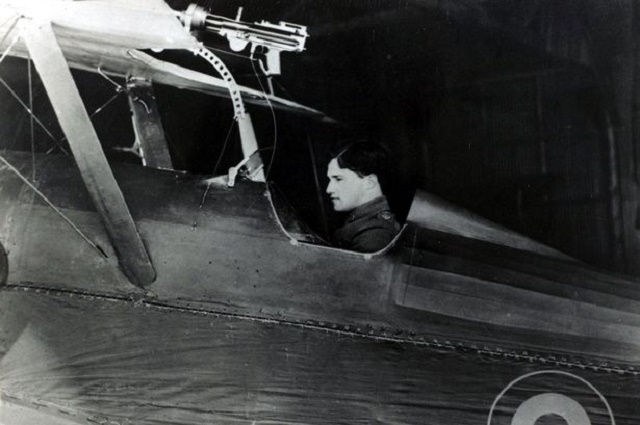John Nichol is a modern-day RAF airman who has dedicated a great deal of his life as an aviator to honoring a pilot who flew in the First World War. Although the two men are separated by decades, Nichol greatly admires his hero and has done some research into their similarities. While there are also many differences between the two, Nichol still uses the influence of his iconic hero as motivation to be the best RAF airman he can be.
Nichol’s hero is an ace pilot by the name of Captain Albert Ball. Although Ball enlisted in 1914 while Nichol enlisted in 1981, there are still a number of striking similarities in their careers. Both flew with squadrons 11 and 56, Ball as a pilot and Nichol as a navigator. Like his hero, the modern RAF airman enlisted as a teenager, fought in a major war (the Gulf War), and was eventually show down. Not surprisingly, this is about where their explicit similarities end. After all, they flew in very different eras. When Ball flew in WWI, airplanes were fairly recent inventions, and he flew single-seat biplanes. Nichol, however, is most familiar with the modern Tornado model.
In an effort to see through the eyes of his hero, Nichol has taken to the skies in a biplane relatively similar to the type flown by Ball. Flying a de Havilland Queen Bee, Nichol donned similar headgear to that of his hero and recreated some of the flight conditions of the era. For instance, the modern RAF airman had a ground crew start his engine by turning the propeller. The primary difference between Nichol’s flight and Ball’s experiences was that Nichol was in a two-seater rather than a single-seat biplane (although Ball eventually flew a two-seater in 1916, the year he survived being shot down). Nichol also had a pilot who was experienced with such models accompany him on the trip, whereas Ball took to the skies alone with limited instruction, the Mirror reports.
Since Nichol was given the opportunity to fly the biplane without fear of enemy fire, he found it to be more relaxing than his experiences aboard a Tornado fighter. Flying at less than one-seventh of his customary speed, the modern RAF airman was able to enjoy the feel of the wind on his face. He did, however, ruminate on what Ball’s experiences must have been like. Not only was Ball flying through colder winds, but the small size of the cockpit in Ball’s SE5a meant that he could not wear a parachute.
RAF airman John Nichol may have been flying in very different conditions that that of Captain Albert Ball, but it still gave him a chance to gauge some of the differences between his Tornado and the planes to which his hero was most accustomed. Although Ball was lucky enough to have survived getting shot down, this luck would not last forever. In 1917, Ball died from injuries after he went down during a dogfight with the younger brother of the famous Red Baron. John Nichol has been fortunate enough to avoid such a fate as a modern RAF airman, but he still looks up to the man who was praised by the Red Baron as an ace pilot and who won a Victoria Cross upon his death.
